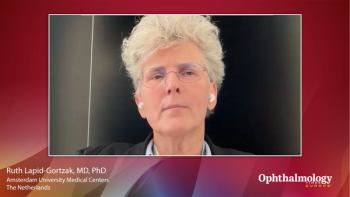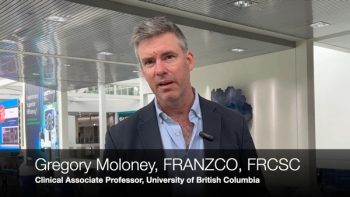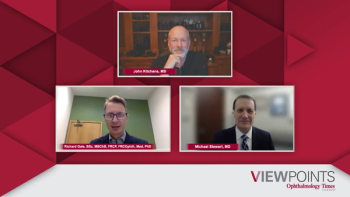
Phase 2b study results of AR-15512 for the treatment of dry eye
At AAO 2021, Aerie Pharmaceuticals presented the results of their phase 2b clinical trial of AR-15512, a TRPM8 antagonist, for the treatment of dry eye.
Michelle Senchyna, PhD, spoke with Modern Retina at the American Academy of Ophthalmology 2021 annual meeting about the phase 2b study results of AR-15512 for the treatment of dry eye. The TRPM8 antagonist stimulates the production of tears and creates a cooling sensation across the ocular surface to treat both signs and symptoms of dry eye. Two concentrations were tested in the trial; both formulations were found to be safe and well-tolerated.
Video transcript
Michelle Senchyna, PhD: Hello everyone, my name is Michelle Senchyna. I am the vice president of both clinical development and medical affairs at Aerie Pharmaceuticals, and I'm at AAO and pleased to talk to you. We just presented the results from our phase 2b study on our asset AR-15512, which is a TRPM8agonist.
TRPM8 is a neat little receptor. It causes, when stimulated, the production of tears as well as a cooling sensation across the ocular surface. And so because of those mechanisms, we think it will be a fantastic asset to treat the signs and symptoms of dry eye.
In our relatively large phase 2b study, a total of 369 patients that were randomized between two different concentrations of 512 as well as vehicle, we saw very statistically significant increases in tear production with both concentrations of 512. It was actually the high dose, 0.003%, that demonstrated the most robust efficacy, upwards of 20 mm of wetting on an uninitialized Schirmer.
When we looked at the data a different way based on a responder analysis, where a responder is someone that has an increase of at least 10 mm of wetting, between 82–86% of the population in the high dose were responders. It's just a phenomenal response.
Now, symptom-wise was even more exciting. We saw statistically significant improvements with the high dose of 512, first based on a SANDE questionnaire as early as day 14. And then the magnitude of that improvement actually got better at day 28 and 84, relative to vehicle. We also saw statistically significant improvements in ocular discomfort and eye dryness both at day 84.
And then lastly, we showed some really unique data, and that is, signs and symptoms are something that really resonates to the clinician. But at the end of the day, we know quality of life is what matters to patients. And so we saw with again, the high dose of 512, very statistically significant improvements in a number of different measures of quality of life, things like driving or reading or watching TV. And that was just very exciting—again, as early as day 14. So these folks are definitely getting better, and consistent with the sign and symptom improvement.
From a safety perspective, all formulations were safe and well-tolerated. The number of ocular adverse events that we had was normal, and 95% of those were reported as mild by the subjects.
So in sum, we are just really very excited about the data. We showed multiple sign and symptom improvements quality of life improvements. We have selected the high dose of 512 to go into phase 3 development. We are going to be starting those studies early next year, and I am really looking forward to being able to share more data with you in the near future. So thank you very much.
The American Academy of Ophthalmology (AAO) annual meeting was held November 12 to 15 at the Ernest N. Morial Convention Centre in New Orleans, Louisiana. The event included Subspecialty Days and a virtual component for remote participation.
Related Content:
Newsletter
Get the essential updates shaping the future of pharma manufacturing and compliance—subscribe today to Pharmaceutical Technology and never miss a breakthrough.












































